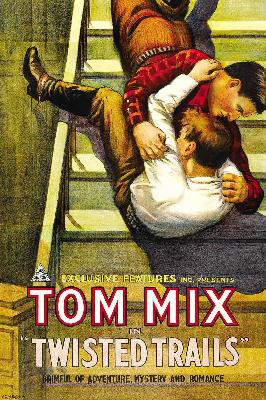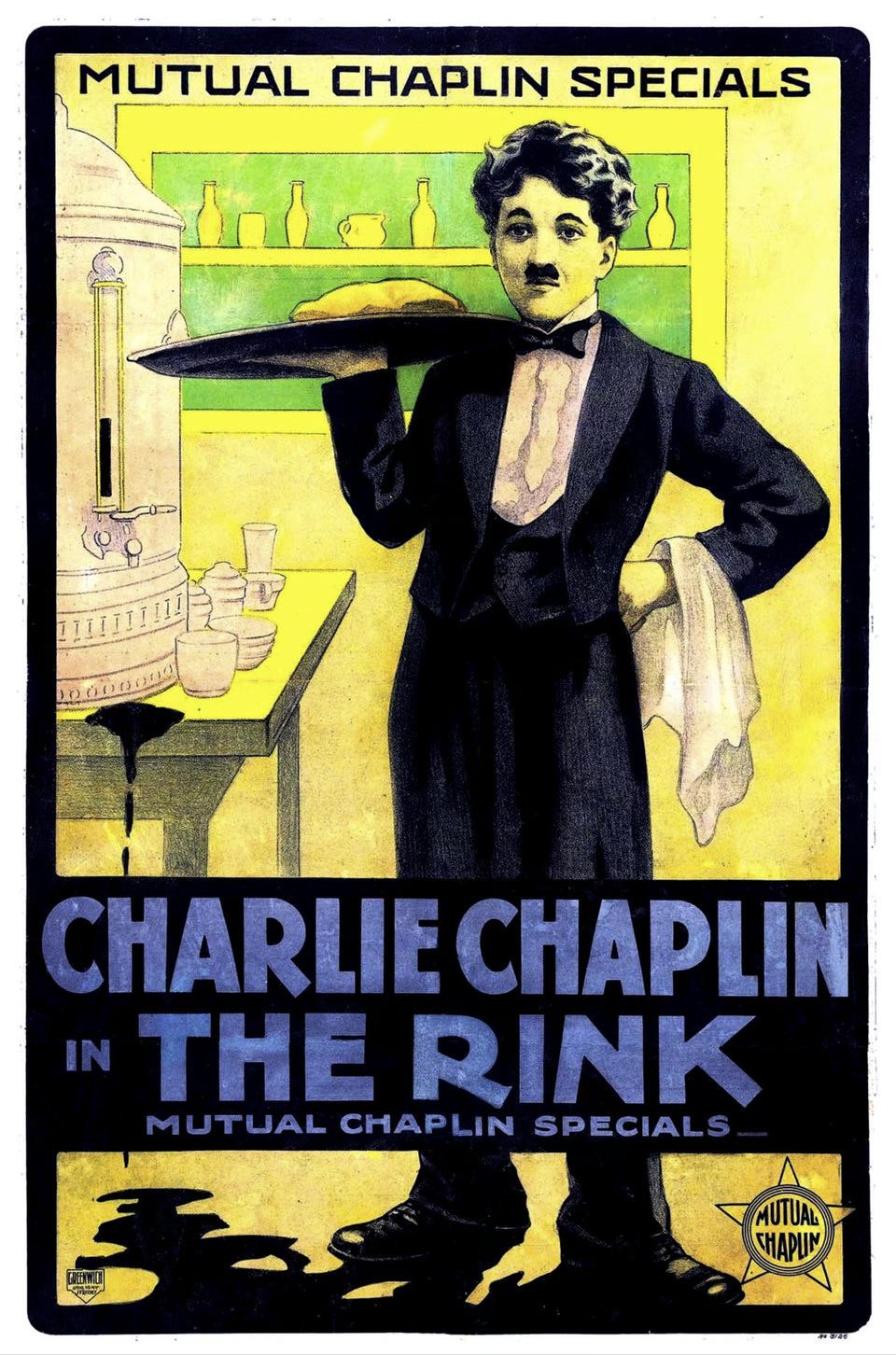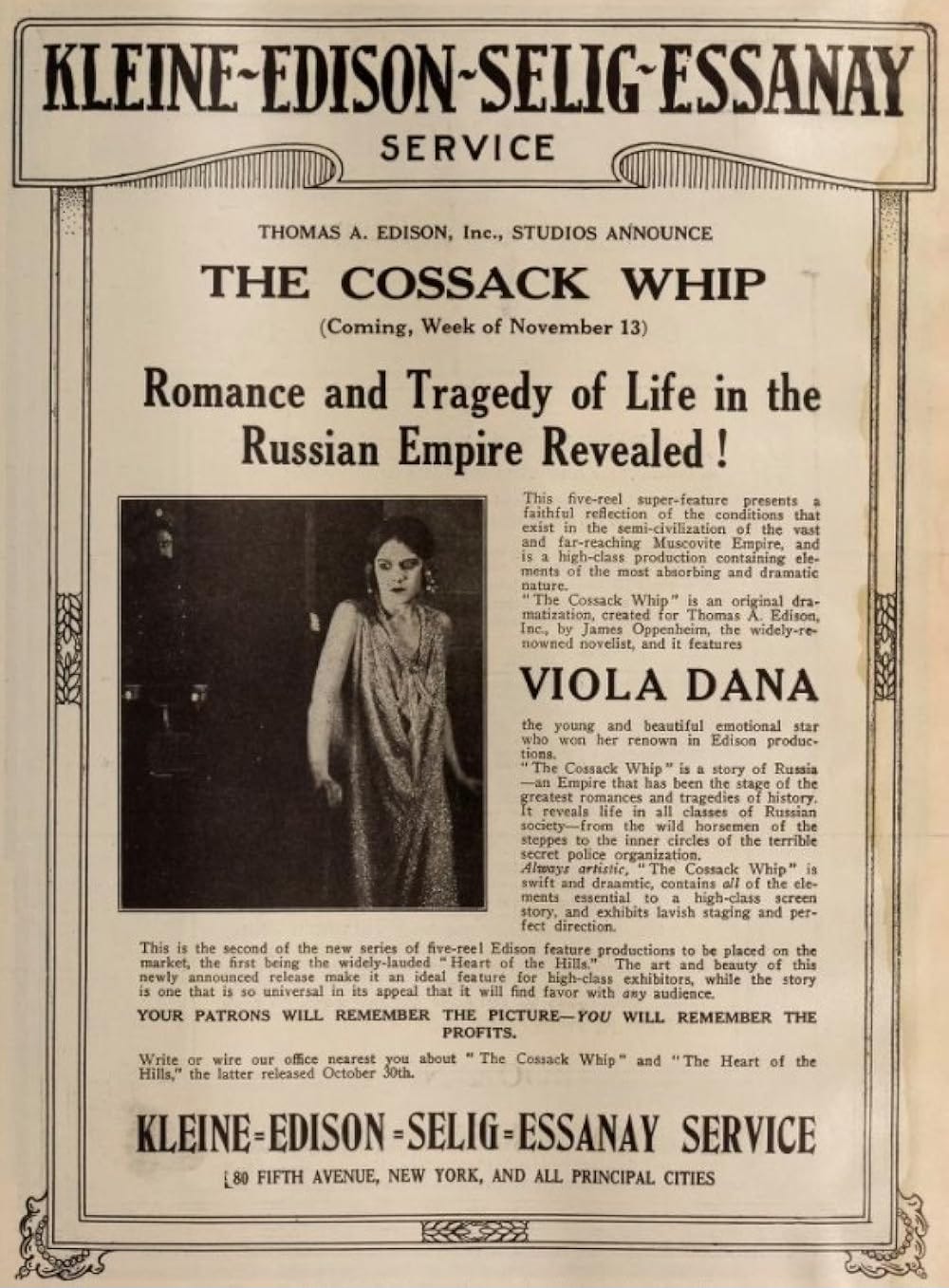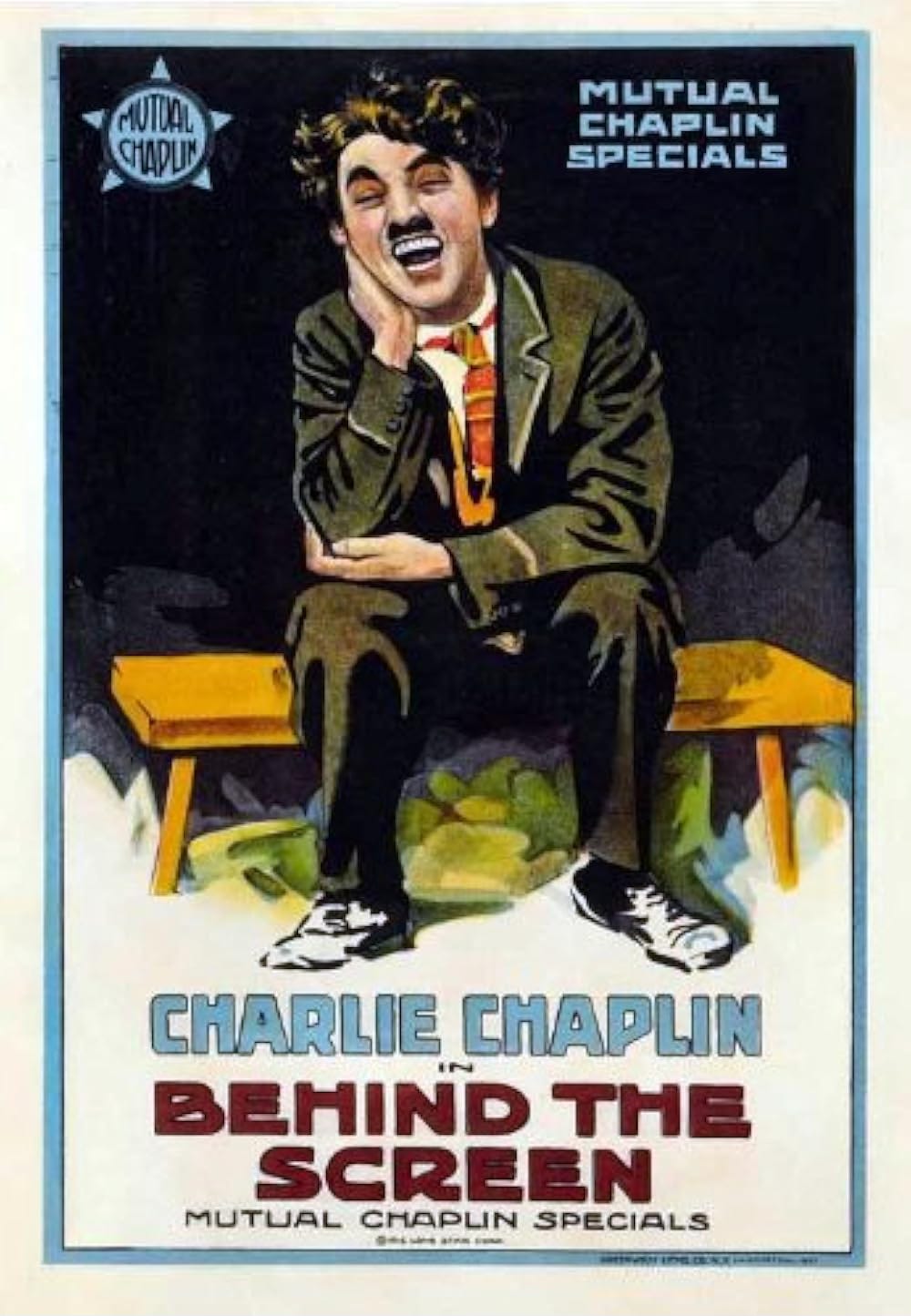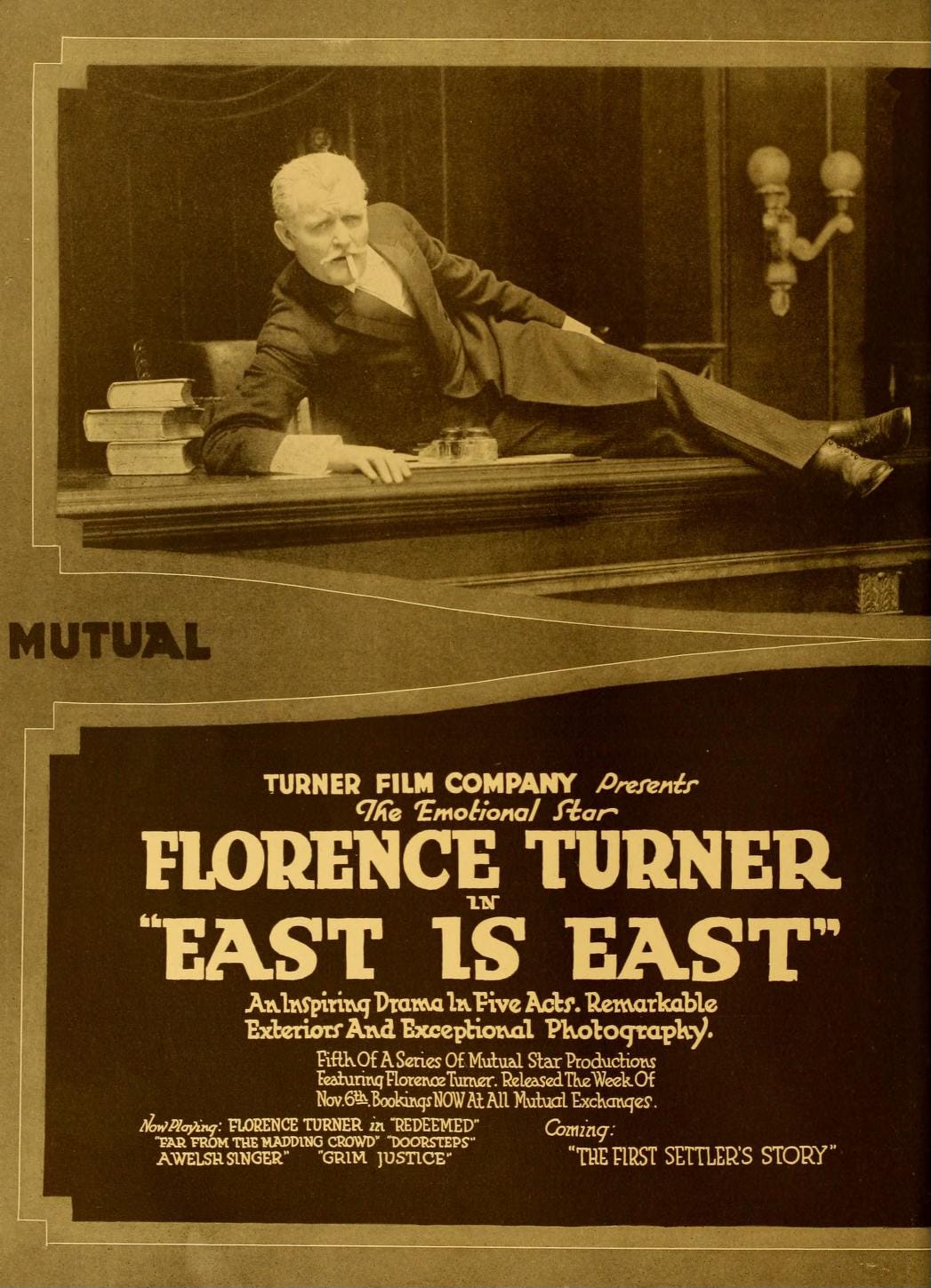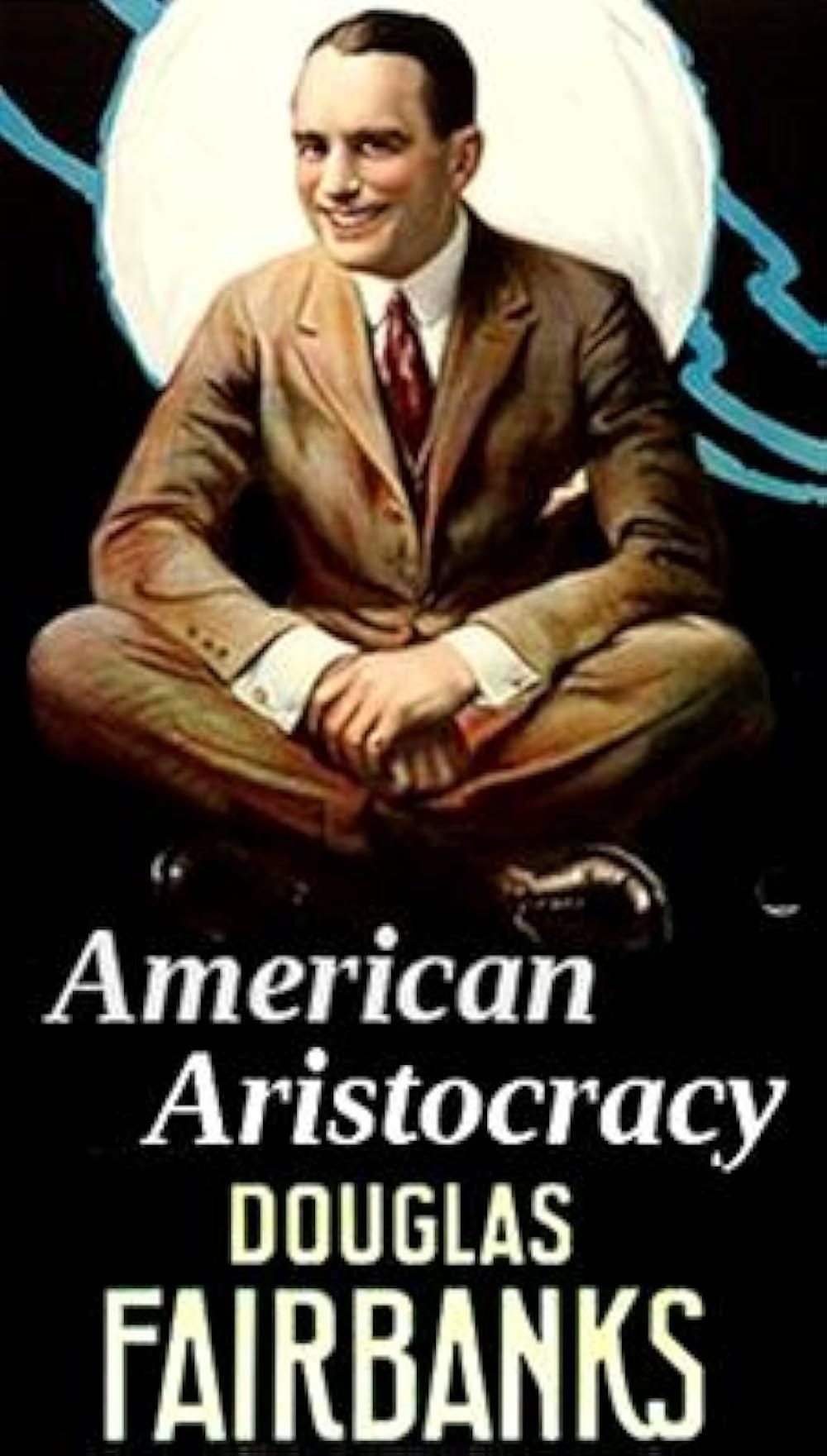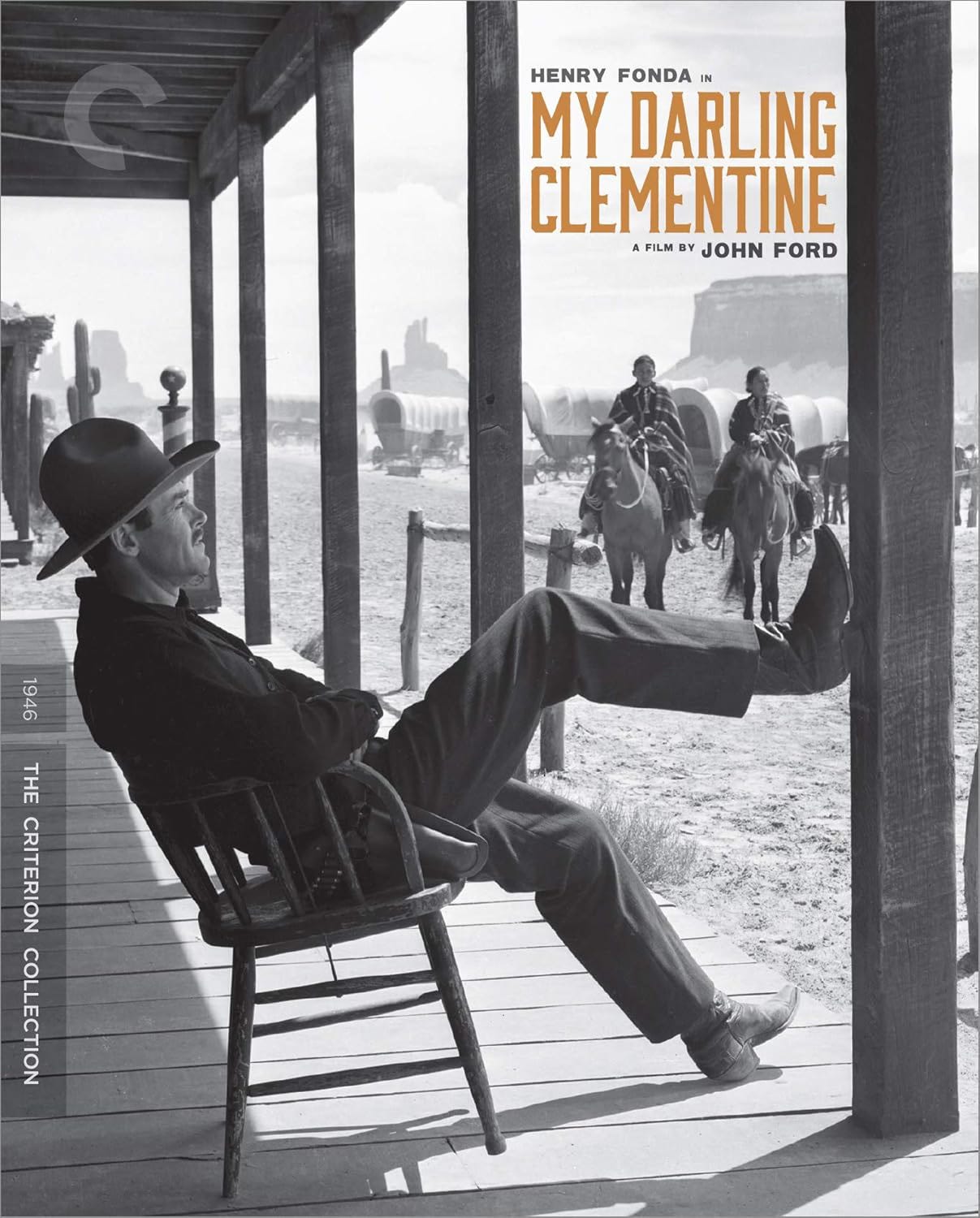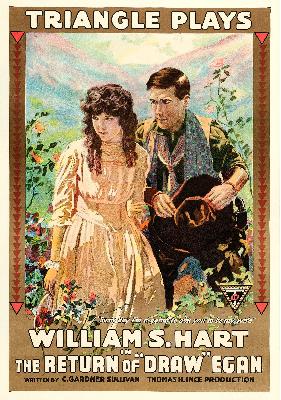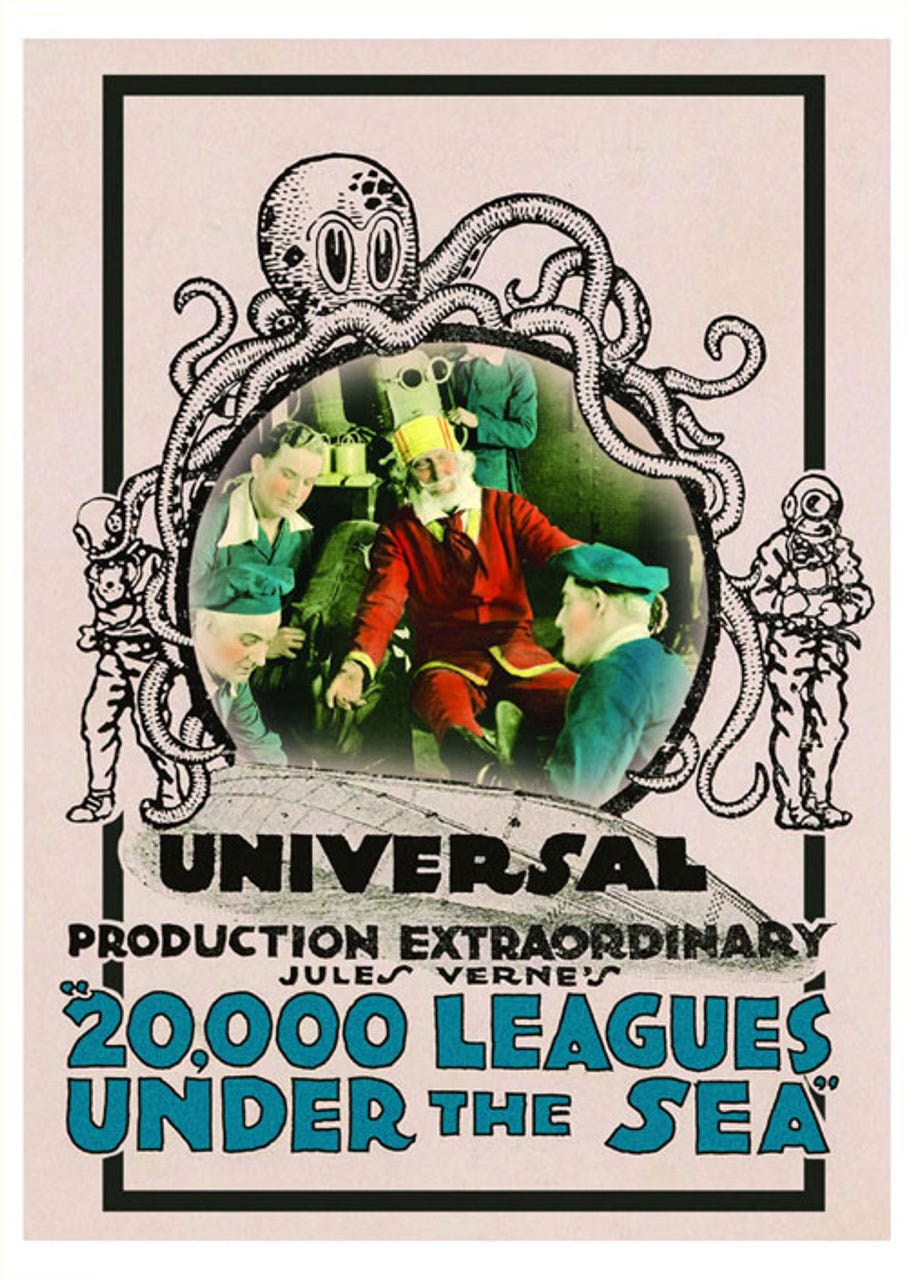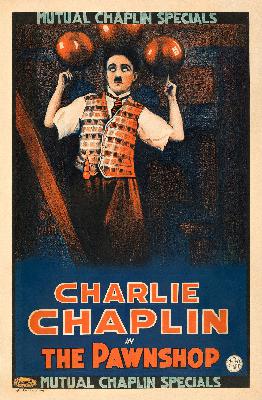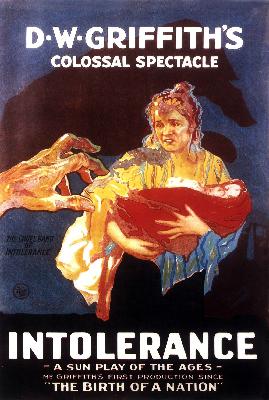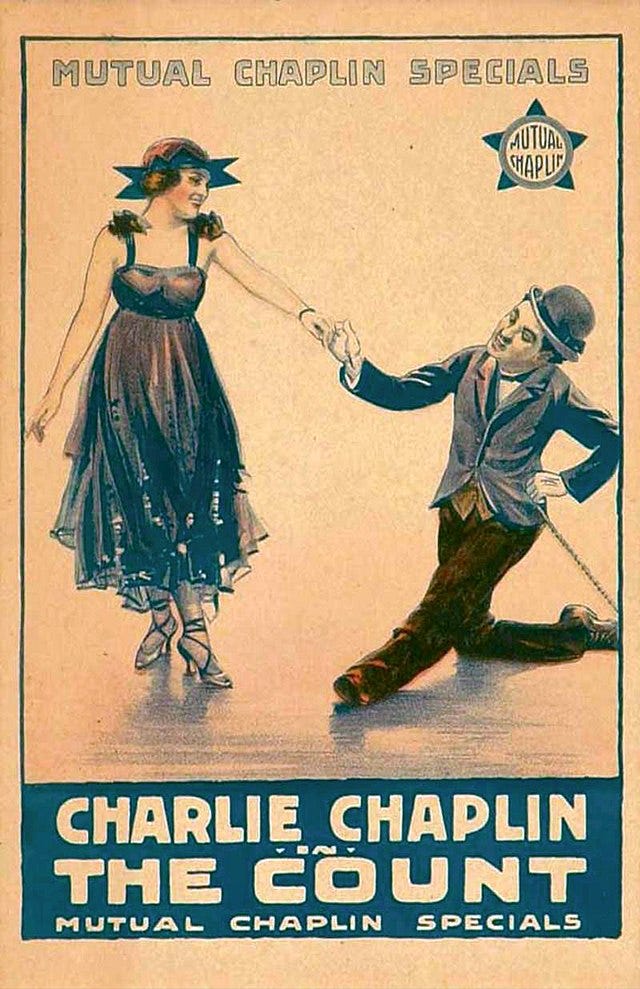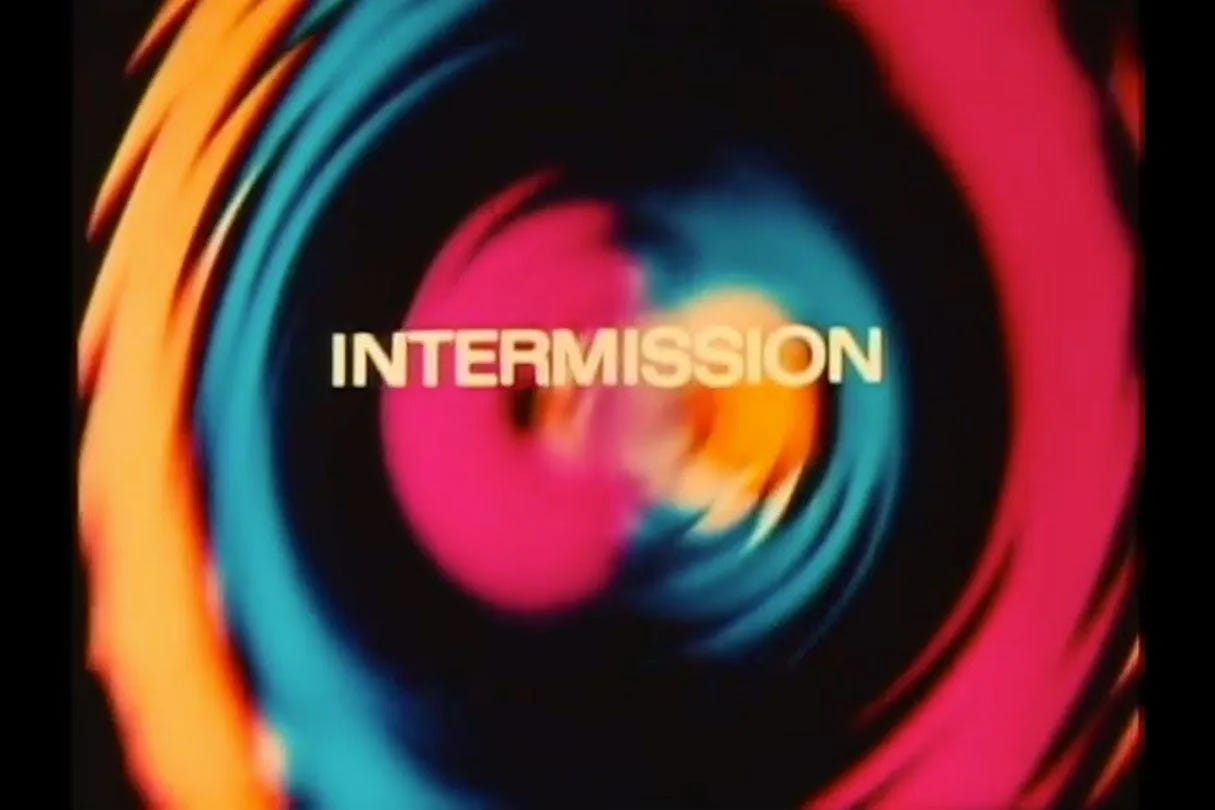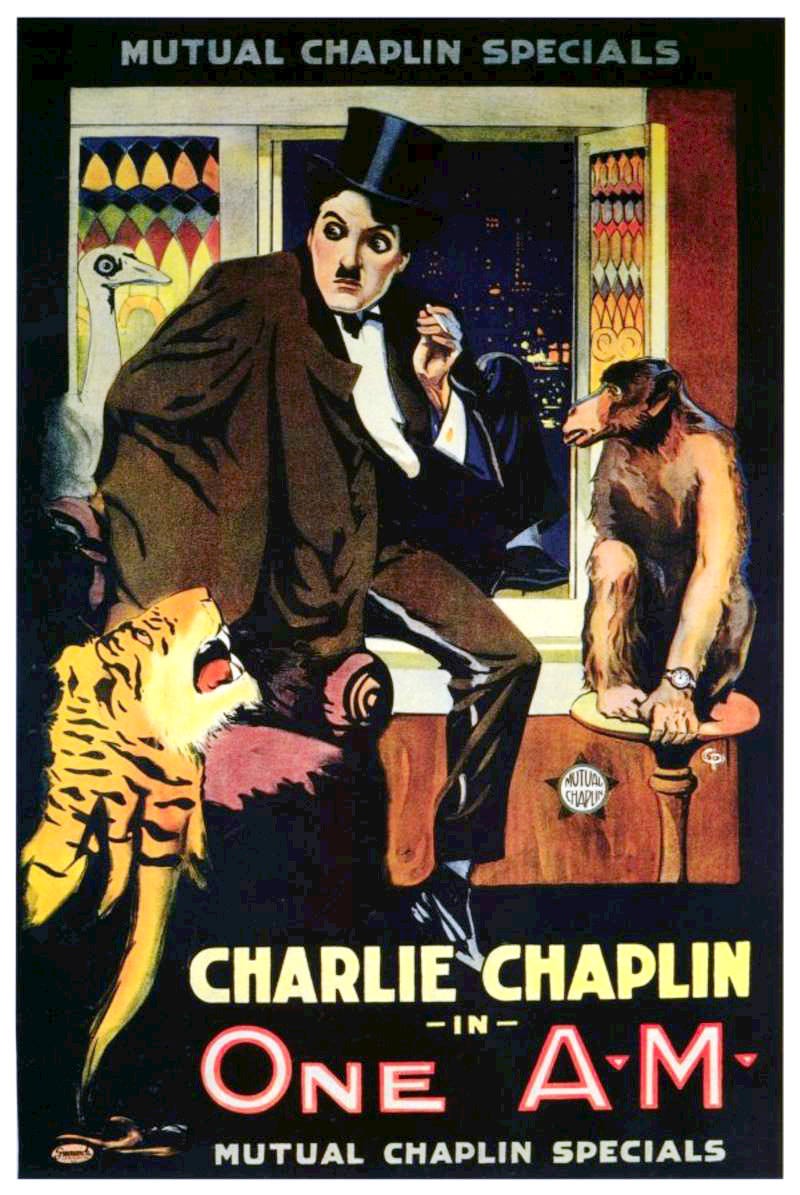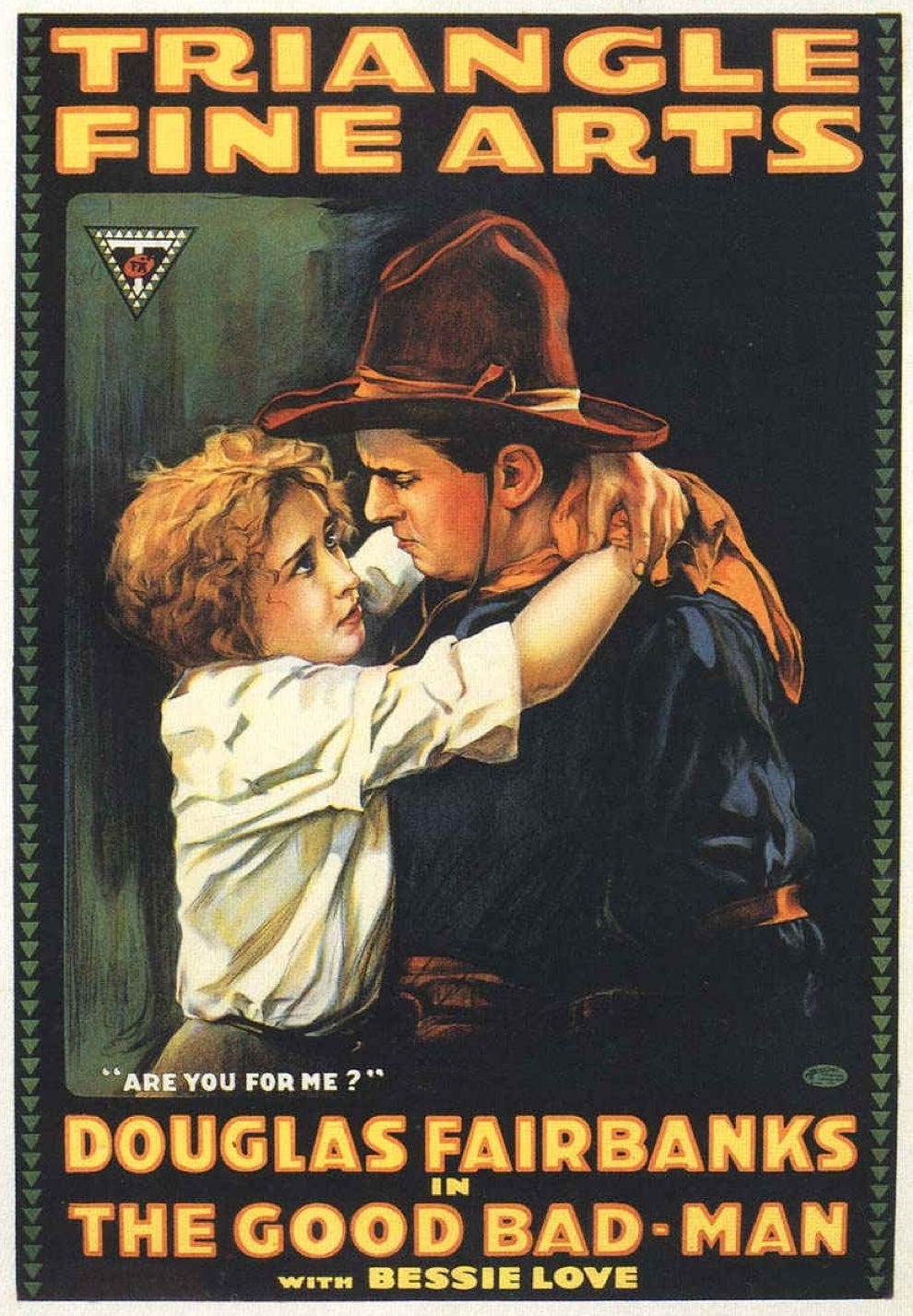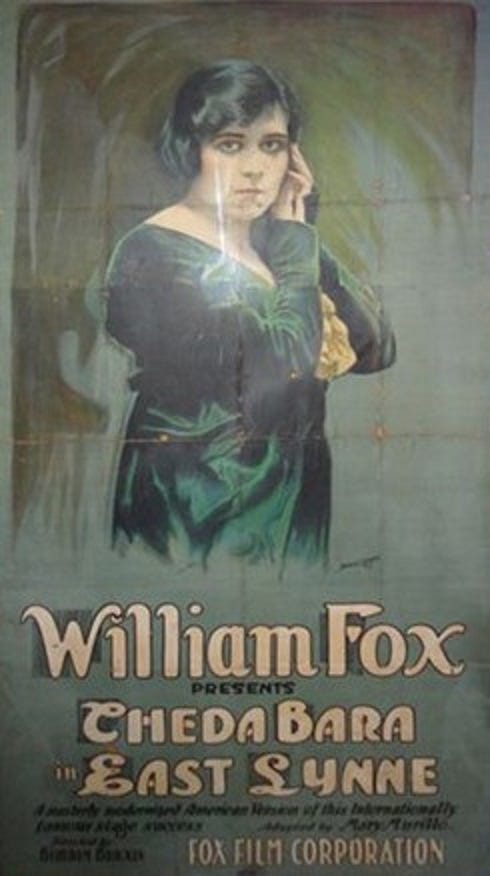Discover All the Movies Podcast
All the Movies Podcast

All the Movies Podcast
Author: Greg Gioia
Subscribed: 0Played: 2Subscribe
Share
© Greg Gioia
Description
79 Episodes
Reverse
Next I’m watching The Matrimaniac [1916], directed by Paul Powell. This is a public episode. If you'd like to discuss this with other subscribers or get access to bonus episodes, visit allthemovies.substack.com/subscribe
I watched it on the same Blu-ray set I’ve shared previously, which includes the 12 short films he made for Mutual in 1916 and 1917. You can click the image below if you want to buy a copy of your very own.Or, you can watch it on YouTube, linked below, as the film is now in the public domain.Next I’m watching Twisted Trails [1916], directed by Tom Mix. This is a public episode. If you'd like to discuss this with other subscribers or get access to bonus episodes, visit allthemovies.substack.com/subscribe
An advertisement for the series:You can watch this on YouTube, linked at the bottom of this post, as it is in the public domain. I watched it on the Blu-ray release of The Cossack Whip, where it’s included as an extra feature. You can click the image below if you want to buy a copy for yourself. The main feature is excellent.Next I’m watching The Rink [1916], directed by Charles Chaplin. This is a public episode. If you'd like to discuss this with other subscribers or get access to bonus episodes, visit allthemovies.substack.com/subscribe
Here are a couple extras I found while doing research about this film. The first is the original “Music Plot" for the film, which are the songs suggested as musical accompaniment for the film. Not every picture came with one of these, and most that were created have been lost, so it’s nice to know what the filmmakers thought would best accompany each scene in the film. While I could not find a movie poster for this film, I found a couple versions of the booking sheet that would have been sent to theaters encouraging them to play the film. Here’s the other one I found.As far as I can tell, this film isn’t online. You can buy it at the link below by clicking on the regrettably low-res image of the Blu-ray. I highly recommend it, and all of Collins’ films.Next I’m watching Mary and Gretel [1916], directed by Howard S. Moss. This is a public episode. If you'd like to discuss this with other subscribers or get access to bonus episodes, visit allthemovies.substack.com/subscribe
I watched it on the same Blu-ray set I’ve shared previously, which includes the 12 short films he made for Mutual in 1916 and 1917. You can click the image below if you want to buy a copy of your very own.Or, you can watch it on YouTube, linked below, as the film is now in the public domain.Next I’m watching The Cossack Whip [1916], directed by John H. Collins. This is a public episode. If you'd like to discuss this with other subscribers or get access to bonus episodes, visit allthemovies.substack.com/subscribe
I own this on Blu-ray, a copy of which you can buy by clicking on the image below.If you don’t want to buy a copy, the film is in the public domain, and you can watch it on YouTube.Next I’m watching Behind the Screen [1916], directed by Charles Chaplin. This is a public episode. If you'd like to discuss this with other subscribers or get access to bonus episodes, visit allthemovies.substack.com/subscribe
Here’s a link to watch the movie on YouTube.Next I’m watching East is East [1916], directed by Henry Edwards. This is a public episode. If you'd like to discuss this with other subscribers or get access to bonus episodes, visit allthemovies.substack.com/subscribe
I have a Blu-ray of My Darling Clementine, which contains this film as an extra. If you’d like to buy that, I’ve linked it below. I’ve also found the film on YouTube, also linked below, if you’d like to watch it there.Next I’m watching American Aristocracy [1916], directed by Lloyd Ingraham. This is a public episode. If you'd like to discuss this with other subscribers or get access to bonus episodes, visit allthemovies.substack.com/subscribe
This has been added to my Letterboxd list of The Best Movies Ever.I have a DVD of this, but the quality isn’t great. I watched it a second time on YouTube, linked below, and honestly, it looks at least as good on YouTube as it does on the janky DVD I have. I wish this, and all of Hart’s films, were restored. Maybe someday.Next I’m watching The Bandit’s Wager [1916], directed by Francis Ford. This is a public episode. If you'd like to discuss this with other subscribers or get access to bonus episodes, visit allthemovies.substack.com/subscribe
You can watch a 4k restoration from a 35mm nitrate print, which is about as good as it gets, at the link below. The soundtrack by Orlando Perez Rosso is great, too. I wish all the old silents looked this good!Next I’m watching The Return of Draw Egan [1916], directed by William S. Hart. This is a public episode. If you'd like to discuss this with other subscribers or get access to bonus episodes, visit allthemovies.substack.com/subscribe
I watched it on the same Blu-ray set I’ve shared previously, which includes the 12 short films he made for Mutual in 1916 and 1917. You can click the image below if you want to buy a copy of your very own.Next I’m watching 20,000 Leagues Under the Sea [1916], directed by Stuart Paton. This is a public episode. If you'd like to discuss this with other subscribers or get access to bonus episodes, visit allthemovies.substack.com/subscribe
Today I’m joined by film historian Dante Ficeti for a discussion of D.W. Griffith’s epic masterpiece Intolerance. This will also be the first podcast I record without a written accompaniment. Wish me luck!This is the Blu-ray I own. It features a beautiful restoration of the film, along with the excised films The Mother and the Law and The Fall of Babylon. This is well worth the purchase price, and will be a welcome addition to any collection.Next I’m watching The Pawn Shop [1916], directed by Charles Chaplin. This is a public episode. If you'd like to discuss this with other subscribers or get access to bonus episodes, visit allthemovies.substack.com/subscribe
This is the 9th short film featuring Chaplin that I’ve watched thus far in the chronology. I liked him a bit more this time around than I did in some of the previous films, though he’s still a little bit mean-spirited and cavalier for my tastes. Nonetheless, I can see why he was as big a star as he was in his era, and his films always have some fun gags.This time around Chaplin plays a tailor’s assistant. As you may expect, he’s not a very good assistant, and bumbles about the job. He gets into big trouble when he accidentally burns the trousers of a Count while ironing them. That’s a fireable offense, and he finds himself out of work.His former boss learns that the Count is supposed to attend a fancy party being thrown by Miss Moneybags, but won’t be able to attend. Hoping to score some of those bags of money, the tailor disguises himself as a count and shows up at the party. Coincidentally, Chaplin also ends up at the party, and begins competing with his ex-boss for the affection of Miss Moneybags. Hilarity ensues, in the form of non-stop sight gags and action sequences featuring a dance floor, a staircase, pastries to the face, and all the expected Chaplin stunts.The ante is upped when the real Count shows up after all. He summons the police to deal with the imposters. After a spectacular chase scene, Chaplin makes his escape, leaving behind the tailor, who is arrested.I’m definitely growing accustomed to Chaplin’s style, and finding his films more and more enjoyable each time one pops up in the chronology. My young sons (ages 6 and 8) adore him.I watched it on the same Blu-ray set I’ve shared previously, which includes the 12 short films he made for Mutual in 1916 and 1917. You can click the image below if you want to buy a copy of your very own.Next I’m watching Intolerance [1916], directed by D.W. Griffith. This is a public episode. If you'd like to discuss this with other subscribers or get access to bonus episodes, visit allthemovies.substack.com/subscribe
Socially conscious movies were all the rage in the 1910s. I’ve already seen films that have dealt with abortion, child labor, prostitution, blackmail, forced marriage, rape, and more, so it’s high time heroin addiction joined the fray. It does so courtesy of Norma Talmadge, making her 5th appearance in the chronology, and her first since Going Straight.This time around, Talmadge plays Renee, an assistant to John Minturn, a painter played by Tully Marshall. She’s somewhat lazy, prone to sleeping in and slacking off at work, and we learn that she’s taken to shooting up morphine in order to give herself the occasional pick-me-up.We’re told in a title card that Renee developed her morphine addiction during her service as a wartime nurse. Interestingly, the U.S. didn’t declare war on Germany until April 6, 1917, nearly a full year after this film was released. I have to wonder if that card was added after the fact, during a re-release of this film, as it would make no sense to audiences in 1916. If anything, it seems like she’s taking it to combat her ADHD, as she’s awfully unfocused on her work, and life in general, and only perks up and gets down to business after she’s shot up, much like Coke Ennyday in The Mystery of the Leaping Fish. The story begins with Minturn seeking models for a painting he’s working on, and settling on Patricia, the daughter of one his wealthy patrons, played by Marguerite Marsh. I’ve seen her sister Mae in a few films, but this is my first chance to see her, although she doesn’t have a major role in the film. She’s mostly there to propel the action. Sir Gordon Galloway, her fiancé, shows up, angry that she’s stooped to modeling for a painter. Unfortunately for the boyfriend, and Patricia’s father, who is eager to marry her to the wealthy, if foppish, Galloway, Patricia has fallen in love with Minturn, and they begin an affair.As this is happening, Minturn learns of Renee’s addiction. Rather than deny using it, or promising to quit, she instead extols the drug’s positives, and promises him that he’ll be even more clever and creative if only he’d give it a try. He’s unconvinced, but in a moment of curiosity, he injects himself, and immediately discovers she was right. His painter’s block is gone! He’s Michelangelo, Da Vinci, and Raphael all rolled up into one!He’s also much more open about his love for Patricia, and when she shows up, the two of them elope. Everyone is devastated. Patricia’s father disowns her, Galloway is inconsolable, and even Renee is glum, for she too was in love with Minturn. Worse, when she goes to shoot up to take the edge off of life, she learns that Minturn has exhausted her stash!From there we see Minturn’s downfall, replete with hallucinations and attempts to get his new wife hooked on heroin, juxtaposed with Renee’s salvation, as she kicks the habit. When Minturn comes to her for a fix, she realizes she’s responsible for his situation, and decides to help him get clean.A lot more happens, but that’s the gist of it to this point, after which Minturn eventually makes his way to a farm, where he cleans up just in time to return to the city and rescue Patricia from the clutches of a drug dealer.If I’ve made it sound comical or over the top, I’ve misled you, as this is a very serious, and very well-executed film. It isn’t a medically accurate depiction of how a person injects heroin, and it is guilty of portraying addiction as a case of one hit immediately turning a person into a hardened junkie, but what it lacks in realism there it makes up for in how well it demonstrates what addiction can do to a person. It’s a grim and serious movie, and while it lacks the intensity and realism of something like Requiem for a Dream, it’s as close to that as a film made in 1916 could possibly have been.I bought the DVD to watch John H. Collins’ Children of Eve, but was of course intrigued by the ostensible main feature of the disc. While it doesn’t live up to the Collins’ film, The Devil’s Needle is still quite powerful. It’s also available on Blu-ray, which I’ve linked below in case you’d like a copy of your own. I highly recommend purchasing a copy, as Children of Eve is an outstanding film, and one I know I’ll find myself revisiting many times, but The Devil’s Needle is quite good, too.Next I’m watching The Count [1916], directed by Charles Chaplin. This is a public episode. If you'd like to discuss this with other subscribers or get access to bonus episodes, visit allthemovies.substack.com/subscribe
Sorry in advance for anyone I have catfished with my recent Best Movies of the 21st Century list. I saw a huge increase in subscribers after posting that, and I fear most of my new subscribers aren’t aware of what they are getting themselves into.If you’ve been here since the early days, or if you've read my “sticky” Coming Soon post, then you know that I’m watching chronologically through a list of 4,000 or so movies, and I started this podcast as a private diary of the films I watch. I’d heard that a great way to remember what you read is to write about it after you read it, read it aloud a few times, record yourself reading it out loud, and then listen to the recording. Since I often forget all the details of movies I watch, I decided to try this method for movies rather than books.After three years of using this method of remembering, I can say with some level of certainty that it doesn’t really work. I mean, maybe it sort of does, but honestly, I can’t remember the details of the films I’ve watched for this project any better than the details of those I’ve watched outside of it. Some things stick with me, and others vanish like the snows of yesteryear, gone from this earth.Meanwhile, I’ve felt that my progress through the list of movies I want to watch has been slowed significantly by having to take the time to write and edit an article about each one, rehearse it, and then read it into a microphone. I also feel that reading it turns what could be a more conversational podcast into something a bit stilted. I do better talking off the cuff than I do with a prewritten speech.So what’s the point? Well, from now on, when I watch a movie I’m going to record and share a podcast without an accompanying article, which in all honesty is how most podcasts are shared anyway. I realized after starting this, as I checked out other podcasts, that I was the only one writing an article and then narrating it.tl;dr version: from now on All the Movies will be a podcast without a written article.I’ll still write the occasional article, like the ones I’ve shared during the break between seasons here, but for all of my “here’s what I watched” podcasts, you’re only getting a podcast. I have a couple already written, so if you’re a fan of the written word you still have a couple left, but after that, it’s all talk, all the time! This is a public episode. If you'd like to discuss this with other subscribers or get access to bonus episodes, visit allthemovies.substack.com/subscribe
I hope you didn’t mind my two recent posts that weren’t a part of the film chronology. I did something similar once before, in October, when I rattled off a list of my favorite monster movies, and I may do it again. Who knows? Fear not, however, if you are only here for the films, as nearly every time I post, it will be a podcast about the next film on my list.Meanwhile, I feel I need to reiterate the reason this podcast exists, as my article about saving cinema attracted a large number of new subscribers. I fear the new listeners may be disappointed when they find out I don’t normally write articles about the world of film, and am instead watching my way chronologically through a list of films, and then sharing my thoughts about each film. Soooo… welcome, new subscribers! I hope you are interested in my thoughts regarding very, very old movies, as at this point, I’m only up to the films of 1916 in my list.Speaking of that list, it has now grown to 3,845 films. Today I’m covering film number 76 in that list. Even if I were to pick up the pace considerably and cover 200 films per year, and not add any new films to the list, this project will still take me at least another 20 years. I hope I live long enough to finish! And I hope everyone reading this lives long enough to celebrate with me when I finally reach the films of 2025!If it seems like I’m rambling rather than discussing today’s film, well, perhaps I am. It’s another Charlie Chaplin short. It’s a fine and funny comedy, and as before I’m growing more fond of Chaplin’s work, but there isn’t much to it.What’s the film about? A top-hatted and tuxedoed Chaplin returns home after a night of drinking, and offers up 25 minutes of sight gags involving him climbing up and falling down stairs, dealing with a revolving table, tripping over rugs, lighting a cigarette, pulling out a Murphy bed, and various other impediments standing between him and a good night’s sleep.See? Now you know why I was stalling for time at the beginning. I’ve got nothing more to say about today’s movie. I promise the next episode will be much more interesting, as the film deals with a very salacious and juicy topic— heroin addiction!You can watch One A.M., and 11 other Chaplin shorts, on the same Blu-ray that I own. You can click the picture below to purchase a copy. I do not make any money if you buy one, just so you know.Next I’m watching The Devil’s Needle [1916], directed by Chester Withey. This is a public episode. If you'd like to discuss this with other subscribers or get access to bonus episodes, visit allthemovies.substack.com/subscribe
I know that in my last podcast I promised another Chaplin movie was coming next, but that was before I discovered the film The Half-Breed, which, as luck would have it, comes exactly next in the chronology. Starring Douglas Fairbanks, The Half-Breed was released 20 days after The Vagabond, and 8 days before One A.M. It was almost as if fate decreed that I find the movie just in time to include it in my podcast. Serendipity, am I right?Not so fortuitous were my discoveries of two other Douglas Fairbanks films, The Good Bad-Man and The Mystery of the Leaping Fish. However, as both were released in 1916, in April and June respectively, I decided to watch all three and talk about them together today, in much the same way that I watched some of Norma Talmadge’s older short films before talking about Going Straight. This is, after all, my first encounter with Fairbanks, who is a bona fide screen legend, so it’s only reasonable that I go back and watch a couple of his prior films to help me better understand who he was.I’m also turning to a friend who knows far more about silent films than I do. That’s Dante. Today, Dante is joining me on the podcast to talk about Douglas Fairbanks in general, and these three films in particular. If you want to hear Dante’s thoughts, be sure to listen to the audio version of this article!First off, I’ll share my thoughts on the three films. Douglas Fairbanks is a Hollywood legend. He was considered to be one of the four biggest stars of his age, and of any age, really, along with Charlie Chaplin, Mary Pickford, and William S. Hart. As such, I’ve been looking forward to seeing what he was all about. Will he be like Pickford and Hart— movie stars that instantly stunned me with their screen presence and talent? Or more like Chaplin, who has taken awhile to grow on me? Let’s find out!First up, I watched The Good Bad-Man. Fairbanks plays an outlaw who is actually a good man. Honestly, I wasn’t terribly impressed by the film, and if I didn’t know that Fairbanks was destined to become I would not have identified him as a future star. It played like a William S. Hart knockoff, and Fairbanks seems out of place. He’s meant to be a tough gunslinger in the Wild West, but he came across to me as more of a middle-aged dad cosplaying as a cowboy. The film isn’t terrible, and neither is he, by any stretch, but nothing about it is great. Unlike early Chaplin films, where I don’t like Chaplin’s persona, I very much like Fairbanks’ demeanor and screen presence. The only issue is that he seems out of place in a Western, and very much as if her were trying to mimic Hart, who by this point had mastered the role of a good bad-man. I want to rewatch The Bargain again after seeing this, if only to see perhaps the finest cinematic good bad-man of all time.Next I watched The Mystery of the Leaping Fish and saw Fairbanks play an very different sort of character. No longer a cowboy, Fairbanks is now a drug-addled super-detective named Coke Ennyday. True to his name, he snorts coke, and shoots up heroin, any and every day, while solving crimes for the Secret Service. This short film has him on the tail of some Chinese smugglers, whom he pursues and eventually apprehends using heroin and opium the way Popeye uses spinach. His hopping around while “hopped up” dance is entertaining, as is everything in this short, silly film that feels like the seed from which things like Cheech & Chong no doubt sprung.Finally, I watched The Half-Breed. This is the winner of the bunch. It’s a fully formed, well-shot movie. The camera lingers on some beautiful long shots, and moves when necessary, something that still hasn’t become common in the films I’ve seen from this period. Many still set up and shoot as if they are filming a stage play, but not Dwan. He’s clearly taken a page from Griffith’s handbook, and knows how to use camera motion to enhance the action on the screen.I watched all three of these films on YouTube, and have shared the videos below.This where I’d normally end my podcast, and it’s where the written portion of this entry ends, but if you listen to the recorded version , you’ll hear what Dante has to say. He has some great insights about all three films, as well as the life and career of the great Douglas Fairbanks. I hope you enjoy our conversation.Next I’m watching One A.M. [1916], directed by Charles Chaplin. This is a public episode. If you'd like to discuss this with other subscribers or get access to bonus episodes, visit allthemovies.substack.com/subscribe
I have to admit, every time a Chaplin film pops up in the chronology, I’m a little nervous. I know I’m supposed to love his work, and praise him as an early genius of film, but so far I’ve been unimpressed by him. It’s as if his distinct look is all that sets him apart from his peers, at least so far. Will this be the film that changes my mind? Spoiler alert— sort of!This short opens with a sequence in a bar that is the best thing I’ve seen from Chaplin yet. He’s still playing the role of a somewhat mean-spirited instigator, but at least no one gets kicked in the seat of the pants this time around. Instead, we get a 4 1/2 minute scene of Chaplin’s Tramp playing his fiddle at a bar, while a five-piece band plays in front of the same bar. He tries to collect tips for himself, perpetrating that he’s collecting for the band, and chaos, and a chase, ensues.After the bar incident, the scene shifts to a mansion, where a wealthy woman, played by Charlotte Mineau, a Chaplin regular, bemoans the fact that their daughter has been missing since she was a little girl. Cut to a Gypsy camp, where we learn that daughter, played by Edna Purviance, another Chaplin regular who I just saw as “the Girl” in The Fireman, was abducted by a band of Gypsies and has been living as a servant for one of them, played by Eric Campbell (yet another regular, he played the Fire Chief in The Fireman) ever since. She’s now full-grown, and laments her sad life.Along comes Chaplin, who enthralls the Girl with his fiddling, before the Gypsy Chief comes along and shoos Chaplin away. He proceeds to whip the Girl, as punishment for talking to the Tramp, but Chaplin returns and clobbers him with a tree branch. While the other Gypsies tend to their fallen Chief, Chaplin and the Girl escape in the Gypsy’s wagon.The next morning, Chaplin washes and grooms the Girl, who is unkempt after a lifetime in squalor, then prepares breakfast. While he’s cooking, she wanders off and meets a handsome young artist, played by yet another Chaplin regular, and future star director, Lloyd Bacon, who offers to paint her. She falls for him and brings him back to the camp to have breakfast with them, much to the Tramp’s dismay. She’s smitten, and spends the entire meal enthralled by the artist. When he leaves, both she and the Tramp are left broken-hearted.Next, we’re in an art gallery, where the painting of the Girl has won first prize in a contest. The mother from earlier in the film sees the painting, recognizes her lost daughter’s unique, shamrock-shaped birthmark, and asks the Artist to help her locate the Girl. Fortunately, the Tramp and the Girl are still camped in the same place, and mother and daughter are reunited, as are Girl and Artist. They drive off happily, leaving the Tramp sad and alone.It seems we’re destined for a bittersweet ending, until moments later, when it dawns on the Girl that it’s the Tramp she loves, and not the Artist, so she demands they turn the car around. They return to the camp, where she tells the Tramp she loves him, and he grabs his fiddle and hat, hops into the car, and off they go, presumably to a happily ever after ending.The is easily the best thing I’ve seen from Chaplin. I hope this marks a turning point, and I’ll find my way onto the Chaplin bandwagon, but regardless of what comes next, this is definitely a fun, well-made, short film.I watched this on the same Blu-ray set that I’ve linked previously, and have linked again at the bottom of this post. You can watch a good, clear copy on YouTube, which I’ve linked for you below.This is the Blu-ray. Click and purchase a copy of your own!Next I’m watching The Half-Breed [1916], directed by Allan Dwan. This is a public episode. If you'd like to discuss this with other subscribers or get access to bonus episodes, visit allthemovies.substack.com/subscribe
It’s becoming clear that early filmmakers were not shying away from difficult topics. I’ve already watched movies that deal with abortion, sweatshops, organized crime, class warfare, and race. Poverty has been a common topic as well, and that’s the focus of Lois Weber’s Shoes. Movie studios were clearly onboard with the notion of cinema as an agent of societal change.Lois Weber was one of the big name directors of the 1910s, and this is the third of her films that I’ve watched, and the first where she didn’t share directing duties with her husband. And while this has something of a reputation as a favorite among feminist viewers, I don’t think it’s as well-made as the last one I watched, Where Are My Children. Where that film was full of subtlety and subtext, here everything is hammered home with no attempt at nuance.For example, at night, the grim hand of poverty reaches down to disturb her sleep. No really. Look!That’s more than a little no the nose, but not much more than anything else in this movie, which is dripping with Message with a capital M.The plot concerns Eva, a shop girl who works to support her family. Her father is lazy, and her mother preoccupied with running the house, so the entire burden falls upon her. Each day she walks to work in old shoes, with paper in the soles, that hurt her feet. She sees a new pair in a shop window, but hasn’t the $3.00 to purchase them. Each payday, she brings the money home to her mother, who always promises next week she can buy shoes, but is never able to spare the money.Enter Cabaret Charlie. He’s a singer at a local night club, and he’s been buying Eva’s co-worker gifts in exchange for sex. He spots Eva and immediately assesses her situaion. He offers to buy her a pair of shoes, but she has to sleep with him to get them. When her old shoes finally break apart in the rain, Eva is left with no choice but to go to the night club and earn herself a pair of shoes, which she does. The film ends with her coming home with her new shoes to find out her father has landed a job, though one that likely won’t last beyond a week, at which time the cycle will begin anew.The real villain here isn’t Cabaret Charlie, it’s that dad. His lackadaisical approach to job-hunting is the reason his family is in such dire financial straits, and even the job he finds at the end promises to be temporary. That whole side to the story is the best thing about the film, as it’s far more real than the episodes at the cabaret, or Eva’s footwear woes. The family isn’t destitute, and there’s no evil landlord lurking at the door. Instead, they are just another poor family with barely enough to scrape by, but without means to handle any needs beyond the most basic. Eva needs a pair of shoes, not a new house or a cure for a disease. That grounds everything in realism, even as other elements of the film work against that grounding. This film has been restored, and is available on Blu-ray, and while I wish I owned a copy, I don’t, and instead watched on YouTube. You can, too!If you want the Blu-ray, you can find it by clicking on the picture of it below. I get nothing if you do, so don’t think I’m trying to make a buck off of you. At best I can live vicariously through your purchase if you buy a copy and tell me in the comments below that you did so.Next I’m watching The Vagabond [1916], directed by Charles Chaplin. This is a public episode. If you'd like to discuss this with other subscribers or get access to bonus episodes, visit allthemovies.substack.com/subscribe
We’ll likely never get to see Theda Bara at the apex of her powers. This is one of only three surviving films in which she had a major role, and none are from her days as a major star. This film, and A Fool There Was, are early works, and the third, The Unchastened Woman, was her final full-length film, and a failed comeback attempt after many years of inactivity. Meanwhile, in between she became one of Hollywood’s most famous actresses, and portrayed characters such as Cleopatra, Salome, and Juliet, as well as starring in provocatively titled films such as The Vixen and The Tiger Woman. Sadly, those films are lost, and what we have likely doesn’t do her justice. It would be as if audiences in 2124 were trying to understand Paul Newman’s appeal, but only had The Hudsucker Proxy, The Left Handed Gun, and Rally 'Round the Flag, Boys! to gauge his ability. They’d likely not get it.There is always hope that a lost film will resurface. A few seconds of footage from Cleopatra were recently found by someone who bought an old projector on eBay. A piece of film that came with the purchase turned out to be a snippet from that film. What a find! The clip can be seen here. However, until any more turns up, we’ll have to accept that we have nothing of her at the height of her popularity.As for East Lynne, well, it doesn’t make much of a case for her as the star we know her to have been. She’s one of many characters in a film with a plot so Byzantine that you’ll have no idea what’s going on unless you’ve read the source material, Ellen Wood’s novel of the same name. The book is a 784 page Victorian era soap opera with plots and subplots featuring countless characters navigating never-ending intrigue. When the movie was made, it was more or less assumed that everyone had read the book, because in 1916, most everyone had, so no effort whatsoever was made to explain anything that was happening onscreen.I have no intention of slogging through the novel, so I read a summary of the story. Much was omitted from the film, but they kept the story of Lady Isabel (Bara) marrying Archibald Carlyle, and being duped by Captain Levison into believing her husband is unfaithful to her. She leaves him. The train she takes derails, and she’s believed to have died in the wreck. She survived, and sneaks back to her home wearing sunglasses and a wig so as not be recognized. She takes a job as nanny to her children— yes another Mrs. Doubtfire moment akin to that I recently saw in Where Is My Treasure?Even if you watch knowing the plot ahead of time the film is still hard to follow because of how it’s paced. The film is only 75 minutes longs, the first 65 of which introduce characters and situations at a snail’s pace. Then the film shifts into overdrive and crams 2/3 of the novel into 10 minutes. According to the summary I read, about 75% of the novel (almost 600 pages) involves Lady Isabel in the guise of Madame Vine, her governess alter ego. We get about 4 minutes of her in the film. It’s a whirlwind!Because of the crazy pacing, it’s impossible to understand what sort of chemistry exists between any of the characters. After Isabel disappears, Carlyle marries Barbara, a character about whom we know virtually nothing other than she loves Carlyle but hates his kids. Other characters show up only to vanish, never to be heard from again. At one point Levison and Richard are fighting over a girl, and… that’s it. Who does she end up with? We don’t know. She never shows up in the film again. So many characters do the same. They come, they go. Why were they ever there? Who’s to say? Not me. I’m just watching this thing.When we do get character development, it’s hammered home with no subtlety whatsoever. Stuart Holmes, who plays the villainous Captain Levison, is poorly handled. When he’s introduced, he kicks a dog to let us know he’s not a good guy. Later, he kills a man, accidentally, but still, and then frames someone else for his crime. Just in case we still think he might be a good guy, we’re later shown a snake slithering through the grass while he seduces Isabel. They may as well have given him a foam finger that reads “Villain” to truly hammer home the notion that he’s a cad.The real question I imagine most will have is how is Bara? My answer is, she’s quite good. She shows restraint during the emotional scenes where many of that era would have gone full ham. At the end, when one of her children is dying, she easily could have overdone it, but she kept the emoting in check, and that moderation in this early role suggests to me that her subsequent stardom was well-deserved. If only more would surface!I have a DVD of this film, but to be honest the transfer there is so bad I found that it was easier to watch this on YouTube. The DVD is from the Silent Gems Collection which more often than not are pretty terrible. They look to me like they were downloaded off of YouTube, and then burned to DVD. The only time I’d recommend them is for the rare silent film that isn’t available anywhere else.Here’s the best-looking version I could find. It has no soundtrack at all, so you can either watch in total silence, or run another version simultaneously and listen to the soundtrack of the second while watching the better-looking transfer below. You decide! I’m more than a little surprised that this film hasn’t been restored, given that it’s one of precious few performances we have left of Theda Bara, but that's the state of silent cinema for you.Next I’m watching Shoes [1916], directed by Lois Weber. This is a public episode. If you'd like to discuss this with other subscribers or get access to bonus episodes, visit allthemovies.substack.com/subscribe


